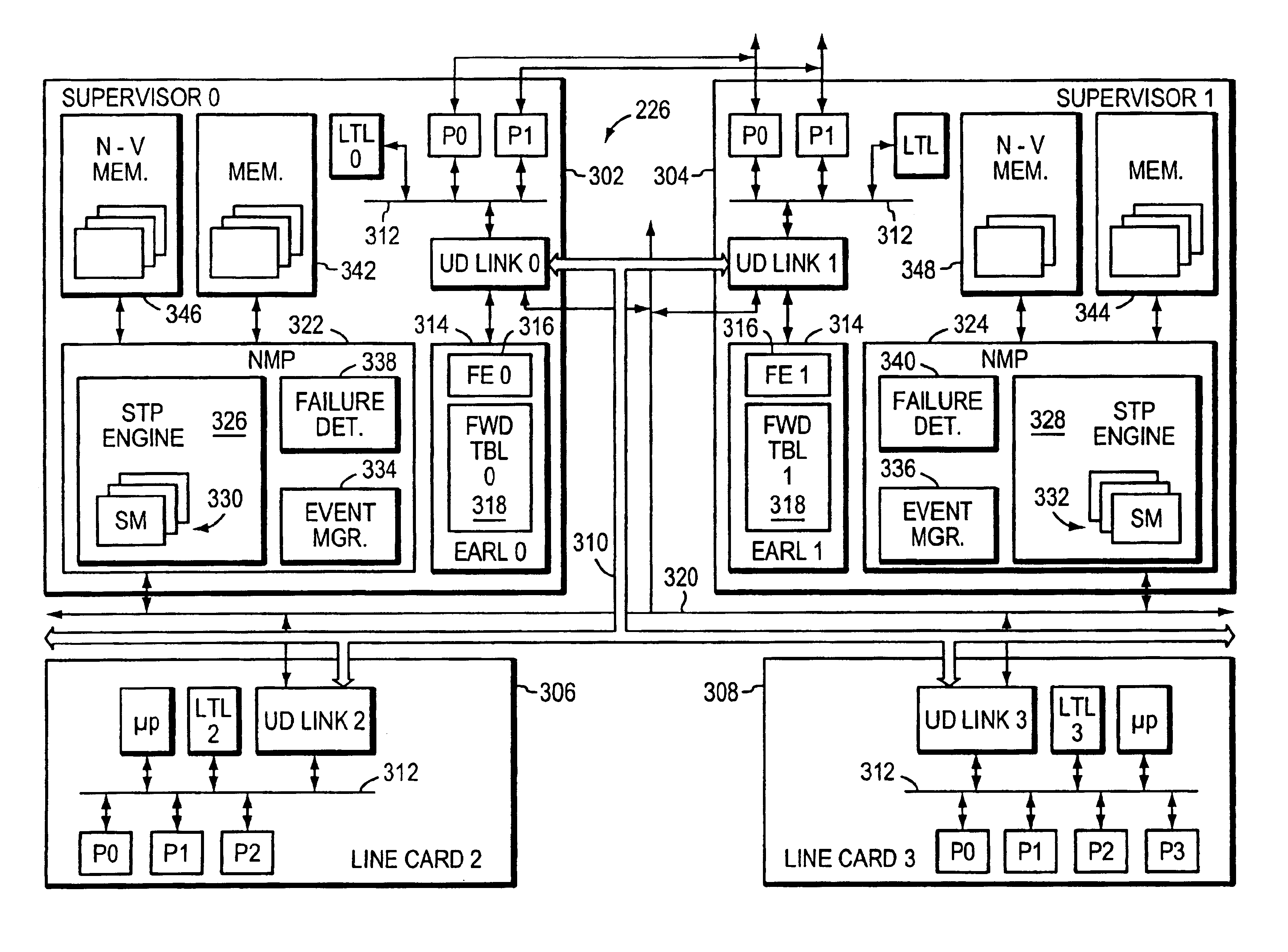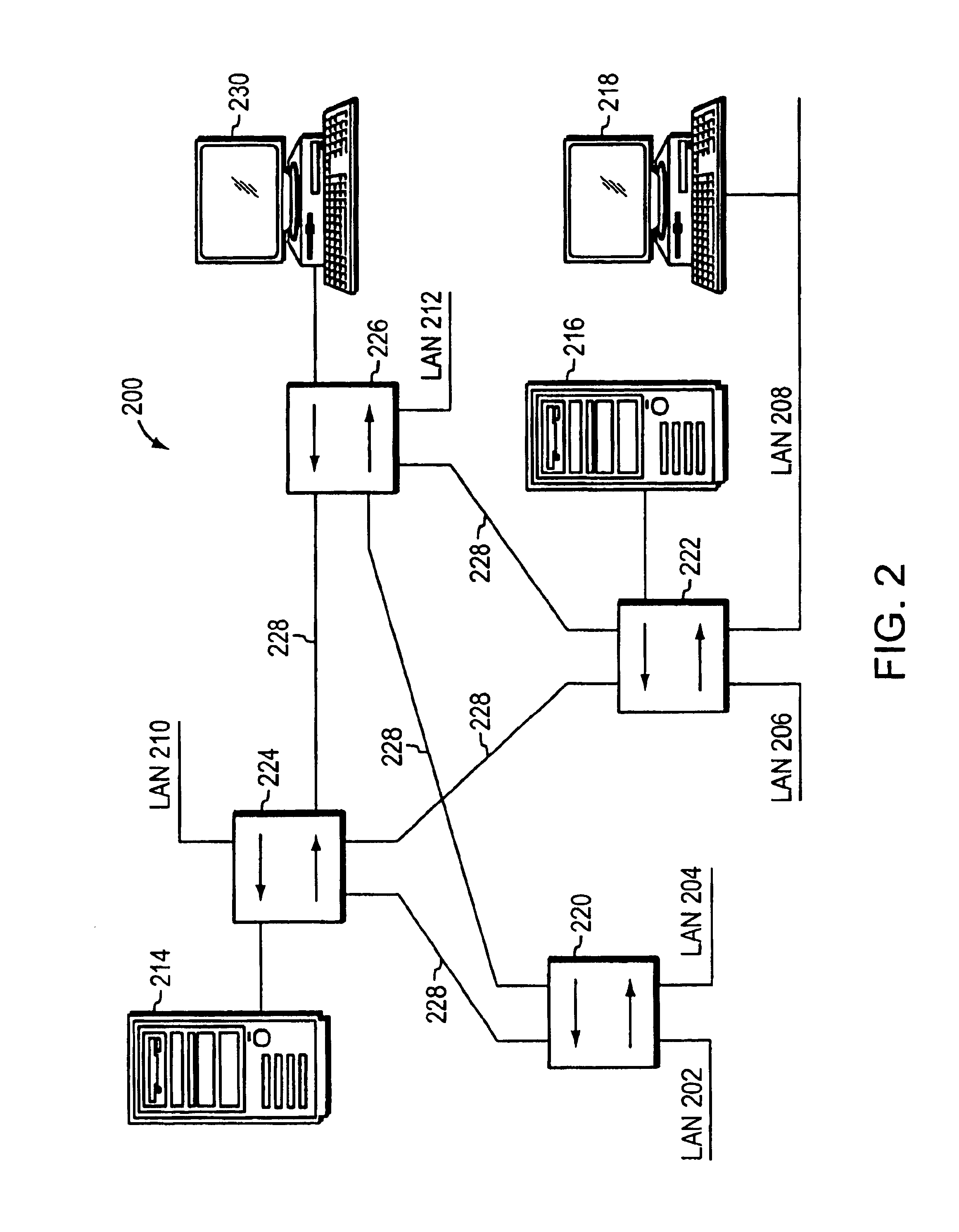Restartable spanning tree for high availability network systems
a network system and high availability technology, applied in the field of computer networks, can solve the problems of circuitous paths or “loops” within the network, high undesirable loops, proliferation of data frames that effectively overwhelm the network, etc., and achieve the effect of avoiding significant network disruption
- Summary
- Abstract
- Description
- Claims
- Application Information
AI Technical Summary
Benefits of technology
Problems solved by technology
Method used
Image
Examples
Embodiment Construction
[0035]EMBODIMENT FIG. 2 illustrates a computer network 200 in accordance with the present invention. The network 200 preferably comprises a plurality of local area networks (LANs) 202-212 and servers 214, 216, such as file servers, print servers, etc. Attached to the LAN 208, which may source or sink data frames over the network 200. That is, LANs 202-212 and servers 214, 216 are preferably coupled to one or more intermediate network devices, such as switches 220-226. An end station, such as end station 230, may also be connected directly to a switch, such as switch 226. Switches 220-226, in turn, are interconnected through a series of links 228, such as point-to-point links or trunks. More specifically, each switch 220-226 includes a plurality of ports that are coupled to corresponding LANs, servers, end stations and trunk links, and each port, such as the ports at switch 226, may be identified by a corresponding port number (e.g., port 1, port 2, port 3, etc.) Switches 220-226 are...
PUM
 Login to View More
Login to View More Abstract
Description
Claims
Application Information
 Login to View More
Login to View More - R&D
- Intellectual Property
- Life Sciences
- Materials
- Tech Scout
- Unparalleled Data Quality
- Higher Quality Content
- 60% Fewer Hallucinations
Browse by: Latest US Patents, China's latest patents, Technical Efficacy Thesaurus, Application Domain, Technology Topic, Popular Technical Reports.
© 2025 PatSnap. All rights reserved.Legal|Privacy policy|Modern Slavery Act Transparency Statement|Sitemap|About US| Contact US: help@patsnap.com



